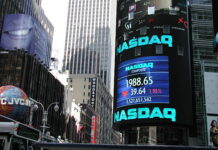Market movers today
Today we get April consumer confidence out of both the euro area and Denmark. It will be interesting to see if the mood among consumers continues to improve.
Statistics Norway releases its business tendency survey from Q1.
We also have several releases from the US, among others the Philly Fed index and initial jobless claims. Later, we have several Fed speakers on the wire.
Overnight, we get inflation figures and PMIs from Japan. This data will be scrutinised by the Bank of Japan to gauge the strength of the Japanese economic recovery and the underlying price pressure ahead of the BoJ meeting next week.
The 60 second overview
Oil: Oil prices dropped yesterday and further overnight, with Brent falling to USD82/bbl, without any oil specific news to spook the market. US recession fears have started to grow again and the USD rebound, which could be likely causes for the drop in prices. It could also be the effect of renewed selling of strategic reserves by the US. Prices would need to fall further to trigger a response from OPEC+ in the form of another production cut. For starters, we think the cartel would like to see the effect of its recently announced cut before slashing output further.
US: The US Treasury cash balance rose USD108bn on Tuesday. It should give the Treasury enough money to cover expenses until at least early June and potentially until mid-July amid the current debt ceiling constraint. US Speaker Republican, Kevin McCarthy is set to propose a USD1.5tn increase in the debt ceiling in return for among other things spending cuts. A group of moderate Republicans and Democrats in the House of Representatives are mulling a plan B to suspend the debt ceiling until the end of the year and tie a long-term solution to budget negotiations according to a Bloomberg story yesterday.
Equities: Global equities fell yesterday with defensives, banks, and value outperforming. Part of the retracement should be seen in light of the strong performance lately. Please also note, the VIX index came lower again yesterday, ending close to 16. Considering where we are in the cycle and the level of growth one should not expect the VIX to contract further. Hence, no more tailwind to equities from fading equity vol right now. In US Dow -0.2%, S&P 500 -0.01%, Nasdaq +0.03% and Russell 2000 +0.2%. Asian markets are mixed this morning and the same goes for futures in Europe and US. That being said, European futures are higher than the US futures where especially the tech/growth part of the indices are dragging down.
FI: Rates volatility continued to be relatively contained yesterday, as in previous days, after it has taken a significant dive lower following the banking turmoil one month ago. Alongside the lower volatility the rates up environment continued with 10y Bunds 4bp higher to 2.51%. Curves flattened again from the front end initially driven by the surprisingly high UK CPI in the morning. Markets added 10bp to 3.86% peak policy rate.
FX: Broad USD firmed somewhat on the day, whereas CAD and NOK were yesterday’s losers as oil prices were lower on the day. USD/JPY is closing in on 135, driven by rising US yields and a still dovish BoJ. UK inflation surprised to the upside, temporarily pushing EUR/GBP below 0.88. Scandies lost some ground, with NOK as the relative loser.
Credit: Secondary credit spreads continued the last week’s tendency of very subdued volatility and lack of clear direction, with iTraxx Xover widening a modest 1.4bp and Main 0.5bp. The primary market remains open, but some issuers have to pay slightly higher NIPs than usual as was highlighted by yesterday’s transaction from Jyske Bank, which priced a EUR500m senior non-preferred transaction.
Nordic macro
Norwegian manufacturers are still battling with weak final demand, rising prices and larger stocks than normal. All leading manufacturing indicators are pointing to a further decline in activity, and the PMI has fallen in recent months. There is an upswing under way in oil services, however, driven by increased investment in the Norwegian sector. We suspect that this is not being captured adequately by the PMI, so it will be interesting to see if Statistics Norway’s business tendency survey shows the same trend.












